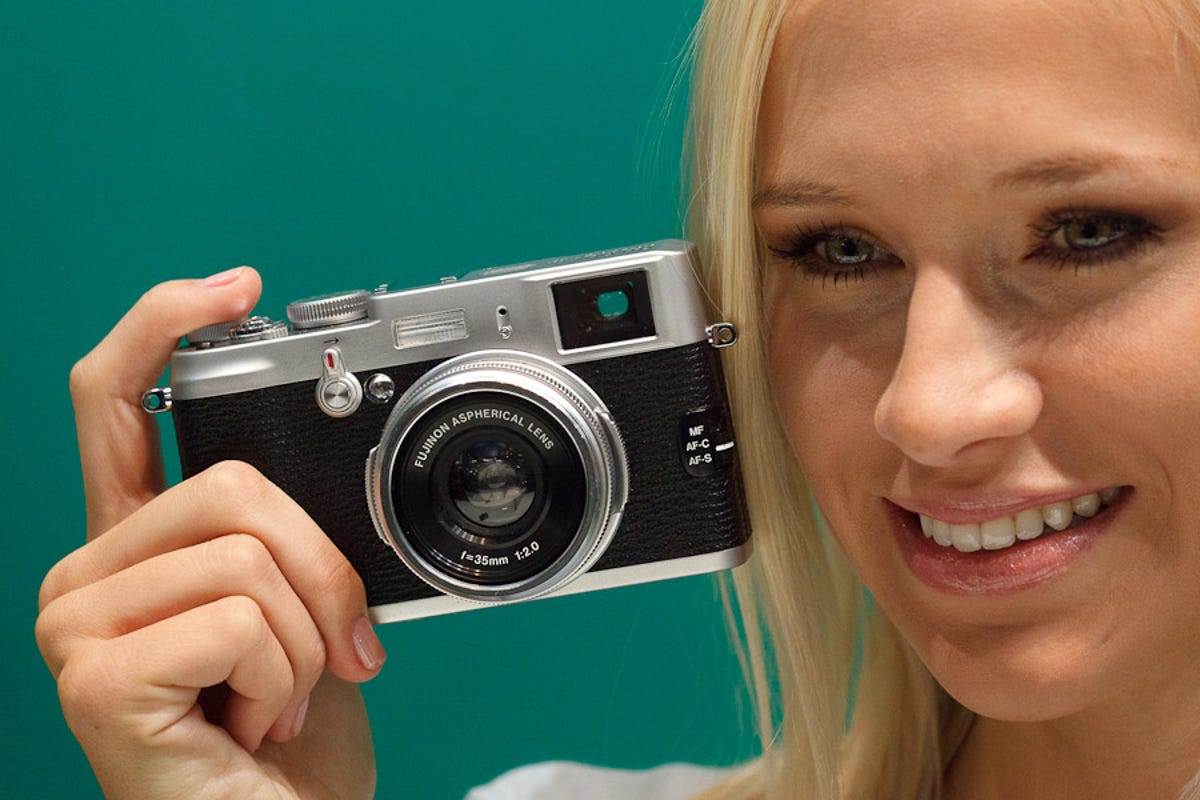Fujifilm's FinePix x100 debut (images)
Fujifilm unveiled its FinePix x100 camera at the Photokina show. Here's a look at the large-sensor, retro-styled, enthusiast-oriented camera.

Fujifilm FinePix x100 debut
Fujifilm FinePix x100 debut
Fujifilm FinePix x100 viewfinder
Fujifilm FinePix x100 viewfinder
Fujifilm FinePix x100 aperture control
The x100's lens is mounted permanently to its body, a fact that makes it easier to engineer the combination optical-electronic viewfinder but that means the x100 isn't tapping into the latest camera trend, small ICL (interchangeable lens) cameras from Panasonic, Olympus, Sony, and Samsung.
The x100 has manual controls for the main settings--aperture, shutter speed, and exposure compensation. The shutter speed leads to 1/4000 sec., after which it goes to an automatic setting. Likewise, the aperture ring around the base of the lens also has an auto setting. When shutter and aperture are both sent to auto, the camera is of course automatic. Setting one or the other to auto puts the camera into aperture- or shutter-priority modes, and setting them both specifically is used for manual settings. The aperture has nine blades, and the camera has a built-in neutral density filter than can cut light by 3 exposure values for deeper depth of field when it's bright or slower shutter speed for moving-water shots.

